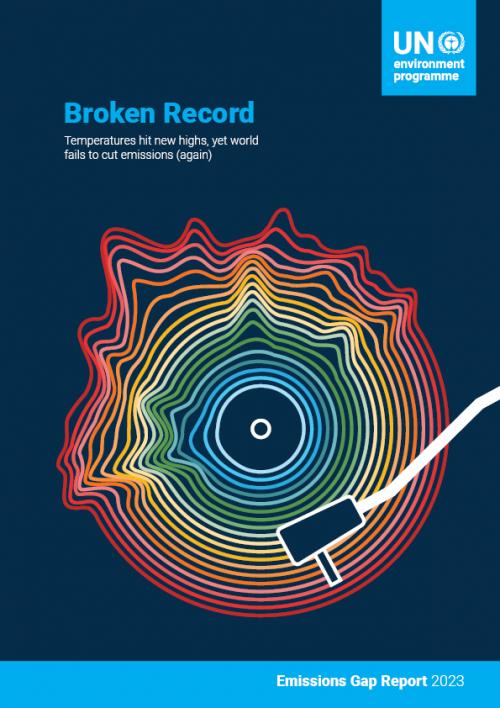
https://www.unep.org/resources/emissions-gap-report-2023
The report is the 14th edition in a series that brings together many of the world’s top climate scientists to look at future trends in greenhouse gas emissions and provide potential solutions to the challenge of global warming.
What’s new in this year’s report
The report finds that there has been progress since the Paris Agreement was signed in 2015. Greenhouse gas emissions in 2030, based on policies in place, were projected to increase by 16 per cent at the time of the agreement’s adoption. Today, the projected increase is 3 per cent. However, predicted 2030 greenhouse gas emissions still must fall by 28 per cent for the Paris Agreement 2°C pathway and 42 per cent for the 1.5°C pathway.
As things stand, fully implementing unconditional Nationally Determined Contributions (NDCs) made under the Paris Agreement would put the world on track for limiting temperature rise to 2.9°C above pre-industrial levels this century. Fully implementing conditional NDCs would lower this to 2.5°C.
The report calls for all nations to accelerate economy-wide, low-carbon development transformations. Countries with greater capacity and responsibility for emissions will need to take more ambitious action and support developing nations as they pursue low-emissions development growth.
The report looks at how stronger implementation can increase the chances of the next round of NDCs, due in 2025, bringing down greenhouse gas emissions in 2035 to levels consistent with 2°C and 1.5°C pathways. It also looks at the potential and risks of Carbon Dioxide Removal methods – such as nature-based solutions and direct air carbon capture and storage.









